#magic history
Text
I saw an anon somewhere on here say something along the lines that no one should work with demons, and that "people have always feared them for a reason". Others have said this anon is clearly apart of a larger harrrasment effort- but none the less, it made me realize that just because I feel the history of demons is common knowledge, it doesn't mean that there aren't people who are unaware of that history.
No. People weren't always afraid of "demons". Especially not in ancient Greece where 'daemons', or 'daimons' (the spelling varies), were considered "lesser beings". This wasn't to imply that they were 'evil' or 'lowly', but rather they were a less powerful spirit than that of a god. They were formidable entities who could either do great harm or help. In fact, some daemons could be a positive force; attached to an individual from birth they, ironically, could act as a kind of "guardian angel". Socrates at one point even suggested, with credit to the priestess Diotima, that love, Eros, might be a "a great daemon...for everything daemonic is between god and mortal".
So, no. People were not always afraid of d(a)emons.
#this is of course apart of a much larger dialog on demonic entities#and a much more complex history#and theological arguments#but yeah#magic#folk magic#spirituality#magic practitioners#witchblr#ritual magic#demons#daemons#spirit work#goetia#magic history#ancient greece
451 notes
·
View notes
Text
Y'all I'm gunna lose my marbles. I'm trying to find how they came to the conclusion that certain deities or certain planets held domain over certain herbs and rocks.
Cuz for those who don't know, that's not a new-age-only practice, this is something folks believed in for a long time; see Agrippa or Culpeper for that. But I don't know that I have adequate resources--or access to resources to find out why or how they came to those conclusions.
If anyone has a resource or reference they can chuck at me, please do so at full force.
252 notes
·
View notes
Text
what's the TRUTH about candle magic? 🕯️✨
in the first episode of the WRYD WELL i take you through all the details, including some info they don't want you to know 👁️
youtube
#candle magic#candle magick#witchraft#magic history#wiccan history#Wicca#Wiccan#magic#magick#esotericism#occult#beginner witch#witch#witchy#witchcraft#simple spells#spell candle#candle spell#Spellcraft#beginner witch spell#candle spells#spell#history#history of magic#hoodoo#Youtube
18 notes
·
View notes
Text
Common Tarot Decks History
Tarot has a long history, that is much-contested, built on mystic and controversial origins. Much of it has been embellished to give it an exotic and mystical origin. This has led to many fights about its true history, where decks originate, and who can practice the art of tarot. While some forms of reading tarot are held by certain groups, cartomancy has been around for a long time. Early Tarot originated in modern-day Italy during the Renaissance as a card Game. Modern tarot's There are many styles of decks. The ones you are most likely to encounter are inspired by or are direct reprints or redesigns of The Rider-Waite-Smith Deck, The Thoth Deck, or the Tarot de Marseille deck. While some of the older decks that have been discovered are also in print they are less in use today.
Tarot de Marseille is one of the older decks still regularly used by people. It is the deck that inspired the previous two. Hailing from Marseille, France, we categorize it in two ways. TDM 1 and TDM 2 classify which generation it is from. TDM 2 is the older classification and corresponds with the 18th century and TDM 1 with the 19th. The earliest designs from 1709 were copied to wood blocks and reprinted and sold across the region and into Belgium and Switzerland. This spread created variations and different printings with distinct regional styles. Eventually, it would spread beyond French-speaking regions and across the Channel to England and back down into Italy.
It is also important to note that we could potentially find even older decks in the French region. History is not fixed, at one point they found a tarot deck in a well, so this history is always evolving and we are always learning more.
The design of this deck utilizes pips for its suit cards and for its Trumps it names the High Priestess as the Papesse and the Hierophant as the Pope. The Lovers is also changed to the Lover and there are two women on the card that he has to choose from, the Magician is referred to as the Juggler, Death is not named, and the Tower is called the House of God.
References to the Pope, The House of God, and a Papesse might have been part of the reason why the church of the time didn't approve of tarot and considered it blasphemous. The deck utilized symbols that would have been well known and made sense to the people of the 18th and 19th centuries where the church was a large part of their lives.
The need to utilize this symbolism held back a lot of early tarot decks as they tried to fit within the confines of Tarot structure. But they were eventually able to break loose from that. Different esoteric movements would come forward. One large one that had a big influence on tarot was the Hermetic Order of the Golden Dawn. Their study of many other religious and occult practices integrated many different beliefs, but that is another story for another time. Two of their leaders near the end of its life, Arthur Edward Waite and Aleister Crowley would make some incredibly influential Tarot decks that still dominate today's market.


Rider-Waite-Smith Decks are some of the most popular. Originally published by William Rider & Sons Limited in 1909 and created by two members of the Hermetic Order of the Golden Dawn, Arthur Edward Waite, and Pamela Colman Smith, it is one of the most influential versions of tarot. The imagery was drawn by Pamela Colman Smith. The deck drew inspiration from historical decks, mainly the Tarot de Marseille (which we discussed earlier) and the Sola Busca deck(An Italian deck from the late 15th century).
Unlike the Tarot de Marseille, and much more reminiscent of Sola Busca, Smith drew fully illustrated suit cards. Waite when developing the order and system for his tarot divination also Changed the order and renamed some of the Trump cards from what was in the Tarot de Marseille, more in line with other versions that he would have studied in the Golden Dawn. One of the big changes was the order of Justice and Strength, which he flipped the order of, making Strength #8 and Justice #11.
Although in the time they were published, and when Arthur Waite and Pamela Colman Smith died, in 1942 and 1951 respectively Tarot wasn't a popular pastime. It was still mostly relegated to people who were interested in occult practices and sought out esoteric communities and secret societies. Mostly a tradition that would be passed down, but it wouldn't stay that way for long. Soon all that would change when the founder and chairman of US Games Systems, Stuart R. Kaplan, happened upon a deck of tarot cards in the late 60s at a toy fair. He began selling tarot cards in bookstores and writing books on them for the American market and they are still highly regarded to this day. When working on his book Tarot Classic he included the Rider-Waite-Smith deck and its history, which made him seek it out. When he found out it was no longer in print, He was able to negotiate with William Rider & Sons to get the rights to the Rider-Waite-Smith deck and begin publishing them in the United States. By the mid-70s there was an explosion of tarot becoming mainstream and most cards came from US Games Systems.
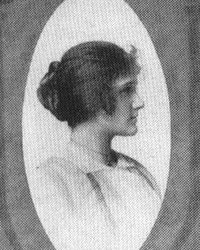
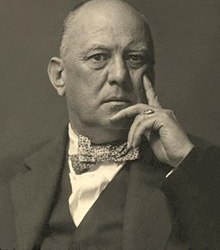
The Thoth Tarot was developed by Aleister Crowley and painted by Lady Frieda Harris. They worked on the deck during World War Two. Aleister Crowley was also a member of the Hermetic Order of the Golden Dawn at the same time as Arthur Edward Waite. A fight between the leading members ended up with its dissolution. The art in the cards uses a technique called Projective Synthetic Geometry as taught by Rudolph Steiner. This is very apparent in its suit cards which utilize pips and this art style ties them together quite effectively.
The Thoth Deck renames many of the cards. Magus replaces the Magician, Strength is replaced with Lust, Justice is replaced with Adjustment, Temperance is replaced with Art, Judgement is replaced with Aeon, and the world is replaced with Universe. Also, Strength and Justice are put back in the place they were in the Tarot of Marseille. Because of the popularity of Rider-Waite-Smith Decks, by the time Thoth decks were being published, they were more of a niche deck for people with a more esoteric bend. Although They have never been out of print since their initial run in 1969.
This deck also utilizes symbols, beliefs, and deities from Aleister Crowley's occult philosophy/religion Thelema.
You don't need to be a follower or know about Thelema to use these decks.
Just as the RWS deck and the Thoth deck broke away from the mold of the Tarot de Marseille and started to work within their own modern language and symbolism, today we have decks that are doing the same and speaking to a more modern society. Like the Wild Unknown Tarot, it doesn't rely on more esoteric, kabbalistic, or religious symbolism and utilizes animals and nature for you to connect with, or Clarity Tarot uses minimalist representations and black-and-white line art to deconstruct the meanings found in more traditional decks to create deeper connections between the reader, the deck, and the spiritual energies.
Ultimately, today when we are working with tarot we are doing much of what was being done in the past, trying to get a better understanding of ourselves, our spiritual connections, our relationships, and where we should be going into the future. Tarot is a fun and interesting way to connect ourselves with other people, the past, art, and many different ways of thought using symbolism and different philosophical, spiritual, religious, and psychological techniques.
For some fun, here are some comparisons of the Tarot de Marseille, Rider Waite Smith, and the Thoth deck of The Fool, the Lovers, Death, and the World cards.







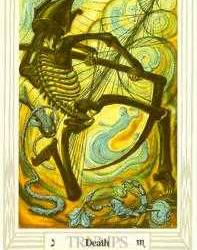

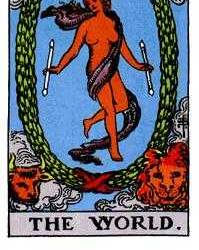


You can really see how it is important to connect with the art of your decks.
Links used to write this post
The World of Playing Cards
Early Tarot: Tarot Heritage
Atlas Obscura
Stuart R Kaplan Amazon Author Page
Rider-Waite-Smith Deck: Tarot Heritage
English Occult Tarot: Tarot Heritage
About Our Thoth Inspired Decks Tarot Cart
Labyrinthos tarot deck types
Tarot de Marseille FAQ
Tarot de Marseille
French Occult Tarot: Tarot Heritage
Tarot.com
5 notes
·
View notes
Text
*takes all the baby/beginner practitioners and sits you down in front of this youtube playlist*
if you’re a witch, please watch this! and subscribe to this channel if you want to learn about esotericism and occult history!
#missives from the hag#resources#advice for beginner witches#advice for baby witches#beginner witch#baby witch#witch#witchy#witchcraft 101#witchcraft#witchblr#witch community#magic#esoteric#occult#magic history#occult history
25 notes
·
View notes
Text
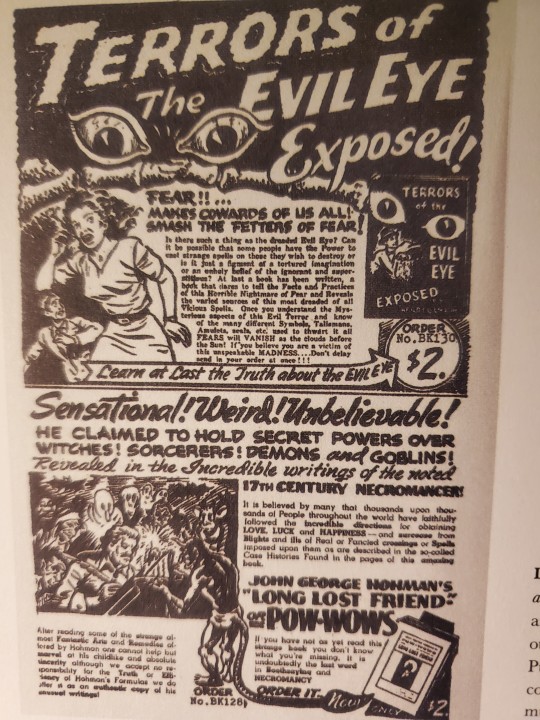
"advertisement from the Mystery of the Long Lost 8th, 9th, and 10th Books of Moses" (1948)

"The Sorcerer's Key or The Great Book of St Ciprian" (1970)
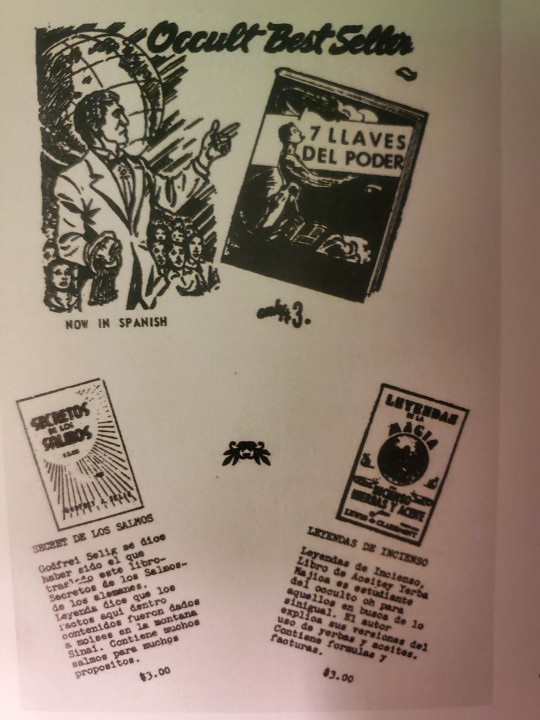
"Advertisements from Lewis de Claremont's The Ancient's Book of Magic, New York." (1940)

"The Magic of Love and Green and Red Magic." (1969)

"The Big Art of Magic" (1970s)
The pulp revolution of magical texts from the book Art of The Grimoire by Owen Davies
1 note
·
View note
Text



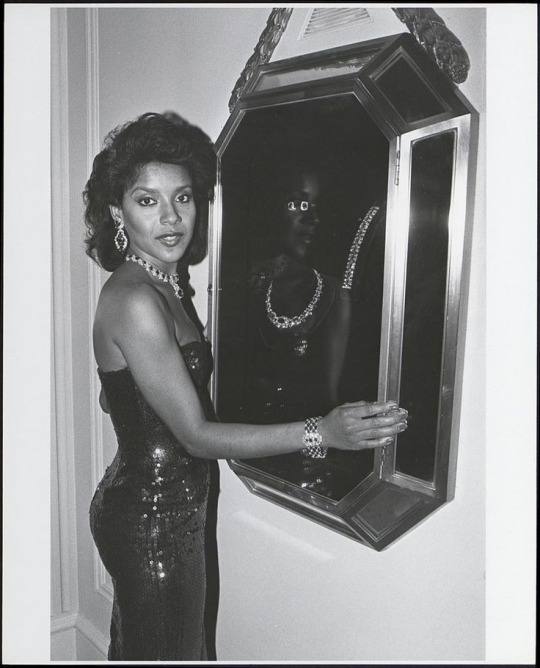






Happy Black History 🤎
#black girl aesthetic#black girl blogger#black girls of tumblr#pinterest#black girl joy#black girl magic#soft life#black boy aesthetic#cottage core black#black business man#black girl moodboard#black history#black actors#black actresses#black activism#freedom
10K notes
·
View notes
Text
The Occult, Witchcraft, and magic
An illustrated history
By: Christopher Dell
Page: 12
“In 1319 the Franciscan friar Bérnard Delicieux was sent to prison for owning a book of necromancy.”
#witchblr#witchcraft#witch#baby witch#witch community#magic#magick#history#witchcraft history#ancient history#world history#life#back in time#magick history#magic history
1 note
·
View note
Text

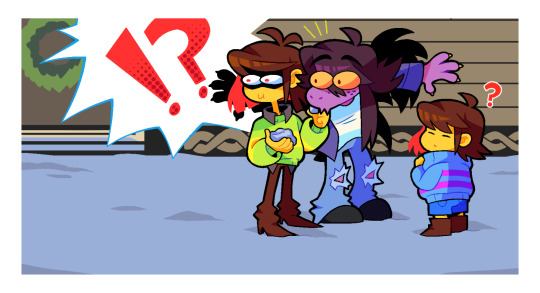


All around me are familiar faces...
FIRST - PREVIOUS - NEXT
MASTERPOST (for the full series / FAQ / reference sheets)
#deltarune#deltarune fanart#deltarune comic#comic#twin runes#twin runes au#kris dreemurr#undertale#crossover#utdr#susie deltarune#frisk#frisk undertale#noelle holiday#dess holiday#you're not too far off susie#but also not quite#she's still trying to wrap her head around the history of the war between humans and monsters#and of course kris ate the magic snow#hey is that dess?#waitaminute#that grillby snowman#is that a newsletter reference?#yes it is
6K notes
·
View notes
Text
A Magical Taxonomy
Warlock: from wær (old English, “pact/oath”) + loga (proto-Germanic, “liar”) + hard “-ck” (Scottish English); Oathbreaker (contextually; breaker of Baptismal Oaths; hence also Apostate)
Wizard: from Wis (old English, “knowledgeable”) + -ard (same, “too much of”); Possessor of too much knowledge
Witch: from weyk (proto-indo-European, “apart, separated, different”)[connotations akin to Latin’s “Sacre”]; Sacred Outsider
Sorcerer: from Sors (Latin, “Fate”) and Ser (same,“to bind”); Fate Manipulator
Druid: from dru (proto-Celtic, “Oak”) + weyd (same, “to see”); Oak-Seer, or Tree-Knower
Cleric: from kleros (Ancient Greek, “lots/ casting lots/ drawing lots”) [contextually; public servants were selected by drawing lots, as opposed to, say, voting]; Public Servant / Clerk
Bard: from bard (proto-Celtic, “Bard”); Bard
#Magic#etymology#dnd#history of the occult#occult#witch#Wizard#sorcerer#warlock#cleric#bard#bard bard#bard bard bard#bard bard bard bard#it’s bards all the way down
5K notes
·
View notes
Text
It's okay to be aesthetically inclined in your practice, but it is important to remember that aesthetics are not history and to remain flexible when you're being confronted with actual historical research. It's okay to be inspired, but to take care that you're not shaping your identity around historical misconceptions and romantic notions.
I mention this because inflexibility on this topic is what nazis and other white supremacists prey on in pagan and occult circles.
Nazis do not care about historical accuracy; in fact they loathe it as a cruel force that would take away their participation in a larger, grander narrative. They view it as a plot to strip them of their supposed birthright.
If you find yourself clinging to a false narrative for the sake of purpose, and go searching for info that makes it "true", please keep in mind that Nazis will always tell you they have the "answers".
One of the hardest parts of this path, no matter the tradition, is having to accept when we are wrong. Especially when we thought we had all the answers. In that way, we are not just reconciling with history but with ourselves.
#magic#folk magic#spirituality#history#magic history#magic practitioners#witchblr#witchcraft#wizards#pagan#paganism#heathenry#nazis fuck off#discourse
205 notes
·
View notes
Text
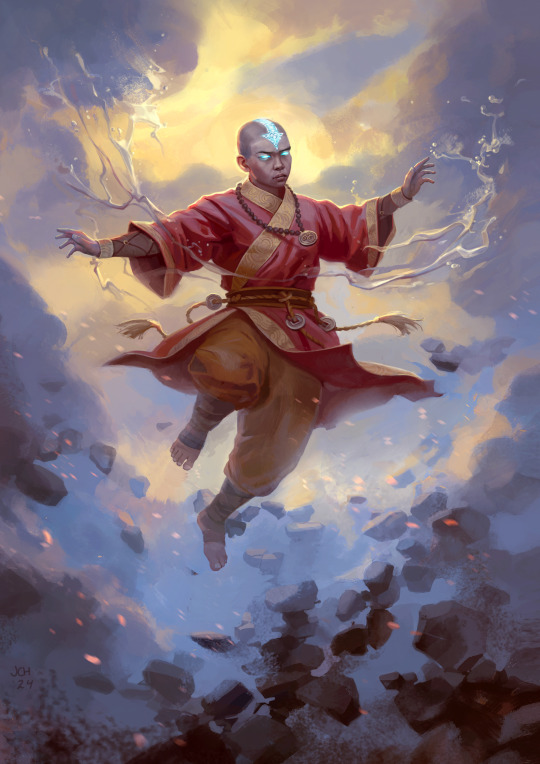
nd here is the final painting for my Avatar: The Last Airbender series! Avatar Aang himself, master of the Four Elements and savior of the world.
The cartoon was significant for me when I was growing up. Now that the live action is releasing tommorow, after 20 years since the original I felt that its the time to create my tribute.
This was the first one of the three (Katara, Sokka) that I made, and the piece I spent the least amount of time on. I also had plans for more characters but time constraints wont allow me to work on them just yet! Perhaps in the future.
I hope you like it!
All the best,
JCH
#dungeons and dragons#board games#concept art#fantasy art#tabletop games#digital painting#magic the gathering#character design#ancient history#avatar art#avatar fanart#avatar fandom#avatar the last airbender#avatar#iroh#aang#sokka#katara#zuko#azula#ozai
1K notes
·
View notes
Text
youtube
how do magic pendulums work? ✨ what do dowsers really believe about their practice? 🙏 is there evidence that cave men did drugs?? 🍄
all this and MORE in my latest video! will you join me, down the rabbit hole? 🐇
#magic pendulum#dowsing#dowsing history#magic#magick#esotericism#occult#occultism#witch#witchy#practitioner#witchcraft#witchraft#spell#history#history of magic#magic history#pendulum#pendulum magic#water witching#ancient aliens#dowsing practice#deep dive#rabbit hole#Youtube
8 notes
·
View notes
Text

There has to be some level of self-relfection after you hire the honest-to-god PINKERTONS to BREAK SOMEONE'S LEGS on which you're forced to acknowledge that you're now just a straight up movie villain
#wotc#mtg#magic the card game#magic the gathering#wizards of the coast#dnd5e#dungeons and dragons#ttrpg#ttrpg memes#pinkerton#us history
5K notes
·
View notes
Text

Maxfield Parrish The Lantern Bearers. 1908. Oil on canvas: 101 × 81 cm (40 × 32 in).
#1900s#painting#maxfield parrish#vintage#night#lights#sunset#nature#fantasy#retro#beauty#surreal#moon#magic#cosplay#garden#lifestyle#art history#design#culture#🌛
2K notes
·
View notes
Text
Recensione: "Alessandro Magno. Il Conquistatore della Macedonia" di Marcel Mazzoni
Recensione: “Alessandro Magno. Il Conquistatore della Macedonia” di Marcel Mazzoni
Buongiorno a tutti sono Elena e vi ringrazio di essere su Alessandro III di Macedonia- blog su Alessandro Magno e l’Ellenismo! Oggi vi parlo della mia ultima lettura che si tratta di:
Alessandro Magno. Il Conquistatore della Macedonia
di Marcel Mazzoni
Alpz Italia (Amazon Kindle Direct Publishing), 2022
ASIN: B0BBVYDYV8, 34 pp.
Alessandro Magno è uno dei pochi antichi greci che la maggior…

View On WordPress
1 note
·
View note